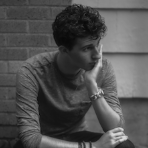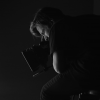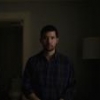Search the Community
Showing results for tags 'development'.
-
I know of Cinelab Boston, and that's about it. Is that the only option on the market for development of E-6 35mm motion picture film?
- 8 replies
-
- development
- laboratory
-
(and 2 more)
Tagged with:
-
I shoot with expired film quite a lot. As a matter of fact, I would say that it's my go to. My favorite stock I've ever shot with is hands down Kodak EXR 5245 50D. I have lately realized, however, that there are a few realities about shooting on expired that I need to come to terms with quickly. It’s unreliable, it’s in short supply, it’s going extinct, and no professional production wants their investment shot on expired film. I need to move on, but frankly, I have always had a visual distaste for VISION3. I want to further pursue something I've only ever experimented with but never fully committed to in the past: emulating the photochemical characteristics of older Eastman fine grain film stocks by experimenting with exposure, density, and processing using modern Kodak film. For reference, I most often shoot on 2-Perf Techniscope with the original line of Basuch & Lomb Baltar lenses dated at the 1940s. The two Eastmancolor stocks I am most interested in trying to emulate are ECN 5248 25T (1952-1959) and ECN 5250 50T (1959-1962). About a year ago I did a short experiment on 35mm with Baltar lenses where I shot a few short reels of footage on VISION3 500T using ND filters in direct sunlight outside and had them exposed and processed in different ways. I then had them scanned in 12-bit HDR and brought them into DaVinci to level out all the footage and see how my end products differed. The four types of footage I got were underexposed one stop and developed at box speed, underexposed two stops and developed at box speed, exposed at box speed and underdeveloped one stop, and exposed at box speed and underdeveloped two stops. After leveling out all my footage in Resolve, I was extremely disappointed in the results. Once normalized with HDR tools in DaVinci, all the underdeveloped footage looked nearly identical to a standard exposure and development. And the underexposed footage just had crushed blacks with very little discernable differences other than that. I considered it a failed endeavor and steered clear of these kinds of experiments again after that. Top visual inspirations: 5248: Rear Window (1954) The Ten Commandments (1956) Vertigo (1958) Ben-Hur (1959) Rio Bravo (1959) 5250: Spartacus (1960) The Magnificent Seven (1960) West Side Story (1961) Lawrence of Arabia (1962) It’s a Mad Mad Mad Mad World (1963) Assuming that the 4k and 1080p blu-rays of the previous film were scanned from the negatives themselves and not the print, I will take it that what I've seen is a quality representation of the stocks in question. My eyes often roll when people talk about footage looking "vintage" "old" or "film-like". Mostly because this could refer to over a dozen different visual aspects in one's footage, and what invokes the feeling of "filmlike" to one person may differ from another. For the sake of this experiment let’s ignore aspects such as lens choice, format size, granularity, lighting contrast, production design, and (for the most part) color scheme. Let’s instead talk about the photochemical qualities of the negative itself. I mostly associate the Eastmancolor look from the mid 50s to the early 60s with neutral to muted highlights, rich and deep blacks, with the density and dynamic range that was available with those stocks at the time. I'm young and an amateur in this field, so I don't understand film on a more in-depth level like so many others hear. But firstly, I'm curious to know what the distinction between film density and dynamic range is, cause I can't quite make heads or tails of it. I am hoping someone with lots of (or any) experience with celluloid, the photochemical process, and the visual evolution of film over the decades can chime and and possibly steer my ventures in the right direction. THE 2383 QUESTION: Small update. During my writing of this post a friend of mine found an interesting video and vimeo and shared it with me. He suggested it as a possibility for me to shoot with 2383 in camera with lots of sunlight and that if developed using ECN-2 and given a simple color correction, the end result may be something close to what I am after. It is difficult for me to discern whether what I like so much about this clip is due to the 2383 stock or if it is just the hard tungsten lighting. I don’t currently have the time or funds to properly run a test myself but I’m putting some consideration into shooting some footage with 2383 in camera rated at 6 ASA in the cloudless sunlight and having it cross-processed using ECN-2. I can get a good 12-bit HDR scan and see if what I’m left with retains the photochemical qualities I have in mind. This clip does remind me very much of the 5250 stock—more so than most other emulations of vintage film do. But as I said, it could just be the hard tungsten lighting. I'm not certain.
-
Hi, everyone! Gonna be shooting a film with a look rooted in Jazz photography from the likes of William Claxton, Dennis Stock and others known for the marvelous images they created around that beautiful genre. Obviously, the film's aesthetic's going to borrow a hell of a lot from these great photographers... However, what I'm most interested in is the B&W film stocks that were around the time in which the most iconic artists were photographed: the 1950s. So, on the one hand, what I'm wondering is if there's anyone in the room with an idea about the the rolls of B&W film available at that time and their characteristics. But on the other hand, I'd like to know if anyone knows where can I find information on the way these photograpers worked, which is to say the lenses and equipment they used, the way they developed their film and created they final shot in the darkroom, etc. Also welcome is information on the film stocks used to shoot movies or documentaries around the 50s. My guess is even at that time Double-X was the real deal, but... You know. A guess is a guess.
-
Hello all! I am currently working on a project with some old 8mm film. It was a roll of Kodachrome II that I found. I got it developed to B&W, as that is the only way most places develop it these days. However, the film is very faded. This is somewhat to be expected, considering it had been sitting undeveloped for upwards of 50 years. However, there is only so much I can do digitally to enhance the image. Is there any sort of chemical process that could be applied to the film after it is developed, to retrieve some of the image? Something that would boost the contrast? I'm assuming the answer is no, but I wanted to ask. Additionally, if anyone had any other suggestions or remedies, I would very much like to increase the clarity of this footage, as I am trying to track down the person who shot it. The footage is below for your convenience. Thank you so much! --------------- Here is the ungraded roll: Here is the graded roll:
- 5 replies
-
- 8mm
- kodachrome ii
-
(and 3 more)
Tagged with:
-
Hello colleagues, I'm shooting my first film on 35mm in the of next month and I've been in contact with a lab in Stockholm about the developing and scanning. The quote they sent me, however, has left me a little puzzled - and instead of potentially making a fool out of myself with them I'll take my chances with you guys (ha). They want to charge me for 2 scans - 1k AND 2k. The lines in the quote are the following: Scan 1K onelight 35mm 4perf Scan 2k EDL to dpx Is it really necessary to have a total of two scans? Since skipping the 1K could potentially save us a substantial amount of money I'd just want to make sure. This particular lab is the only place left in Scandinavia for developing 35mm, so I doubt they're trying to rip me off. Thankful for any answers! Best, Kaspar
-
Hey crew, Hope this isn't against any rules but figured if there was ever an audience for this, it's everyone here. So I just wanted to spread the word and ask for help for an amazing cinema arts organization here in NYC. It's called Mono No Aware and its director, Steve Cossman, has been running really fantastic 8mm and 16mm film based workshops and screenings in NYC and honestly all over the country and world for 10 years now. Most of those workshops have been out of its directors apartment in Brooklyn as well as NYC-based community darkrooms. I just want to be clear... I don't work for Mono No Aware or Steve. And have only taken a few workshops from MNA (like the 500T reversal one I documented here or b&w caffenol non-toxic processing or b&w reversal) which I loved and made me really fall in love with the format and the tangible aspect of it. Anyways, Mono No Aware is running a kickstarter to start the world's first motion picture non-profit lab here in Brooklyn, NYC to help the artist community and grow that community as well. It will feature lots of capbilities like processing, 2k scanning, rentals and more workshop space. From projects like Impossible Project's film and camera, New 55/New55 Color instant film, Film Ferrania, Kodak's new camera/processing and other film based projects, a lot of really awesome things are happening in film now that things are leveling out in terms of digital adoption. Let's make it happen! (Also donate to New55 Color if you can! I don't even have a 4x5 but donated to help keep peelapart alive) Here's a bit of info directly from the kickstarter but check it out and donate what you can. If there was ever an organization that deserves some filmmakers cash, it's MNA and Steve Cossman. That man puts his life and soul into making it thrive. MONO NO AWARE is a cinema-arts non-profit organization working to promote connectivity through the cinematic experience and preserve the technologies of traditional motion picture filmmaking. In 2015 MONO NO AWARE Organized 38 Local workshops for 420 workshop participants in Brooklyn Traveled to lead 40 Classes and lectures at host institutions for 600 participants through outreach programs Facilitated 100+ equipment rentals Distributed 50,000 feet of film stock for 1,000's of filmmakers Presented 20 artist-in person screenings for 1,000 audience members Presented the work of 33 international artists at our 9th annual exhibition to an audience of 900 over 2 nights The MONO Lab will be unique because in addition to our strong educational initiative and active screening series, we will be able to offer the services of a commercial lab, affordable facilities for continued practice, and we will increase our ability to host international artists for production of new work and presentation opportunities. With the equipment donations from a major motion picture lab, professional animation studios, and several post-production facilities, we now have the ability to provide so much more--all under one roof. With our space we can become self sustaining in our efforts to engage and play a larger supporting role within that landscape on all levels. OUR GOAL The more that we can raise through this campaign the more we can make available to a greater number of people. Increased services and facilities will include: SUPER 16MM & SUPER 8MM LINEAR PROCESSING FOR B/W & COLOR NEGATIVE FILM SUPER 16MM CLEANING AND SCANNING SERVICES SUPER 16MM & SUPER 8MM CAMERAS / LENSES / PROJECTORS / INCREASED PRODUCTION EQUIPMENT ACCESS & SPACE DRY LAB SPACE - OPTICAL PRINTING / CONTACT PRINTING / FLATBED EDITING & VERTICAL EDITING STATIONS WET LAB SPACE - WITH 24 - HOUR ACCESS TO FACILITIES INCREASED PROGRAMMING / WORKSHOPS / SCREENINGS / RESIDENCIES This is a critical point in the history of the moving image. With your help, we can make this new space a reality. Mono No Aware is a 501©(3) organization, which means your donation is tax deductable. So ya. There's my plea. I'm donating. Hope you do too! And be sure and take a workshop if you're ever in NYC!
- 6 replies
-
- super 8
- processing
-
(and 6 more)
Tagged with:
-
Hello, I have a short film shoot set to go to camera early November and we're shooting on Kodak 35mm film. There's a particular scene involving two characters who go out for a night in the city and involves them running through the streets, in china town shops, and restaurants. We've set aside 5219 for those scenes and will be shooting on Zeiss Super Speeds but I'm worried it still won't be enough. So I've thought about push processing. The look of push processing would also aid the story as everything is supposed to feel heightened for the characters. I've never attempted it before so I wanted to see if anyone could help answer some questions: - Does push processing actually get you more image in the blacks or just simply up the contrast? - How many stops should one push to get clear characteristics of push processing (grain, contrast, saturation). I've heard that modern stocks need to be really pushed to their limits before seeing clear results? - Considering I'm shooting 500T, how do I rate the stock for each additional stop? +1 = 1000, +2 = 2000? - Is it even worth it to get the effect chemically or can the same results be achieved in the DI? Thanks for the help! Chris
-
I just received my film back from the lab. It's one of my remaining rolls of Ektachrome reversal 16mm film. Upon projecting it, i realized in horror that the majority of the footage- especially in the shadows- have a reddish orange tint. If the film was shot under tungsten lighting, I'd blame myself, but it was shot on a bright sunny day. I did not use any filters. The film looked consistently slightly underexposed, which may be my fault. I can't think of any other reason for the orange hue, other then that something went wrong during processing. Could it be anything else? X-rays maybe? Needless to say, with the discontinuation of Ektachrome, I find it kind of frustrating when my limited supply of it gets ruined.
- 11 replies
-
- Ektachrome
- 16mm developming
-
(and 2 more)
Tagged with:
-
Hi! I have to develop Fomapan R100 double 8mm B/W reels (10mt each): i bought the development kit Fomapan R100 B/W and I have a Lomo tank that can contain only one reel at a time. Can you tell me what are the proportions of water and solution for each reel?





